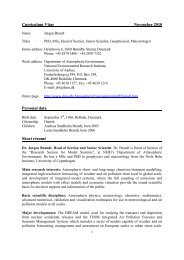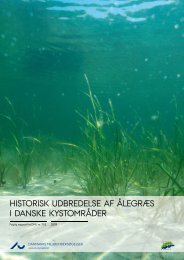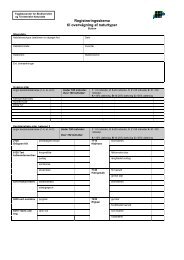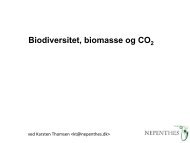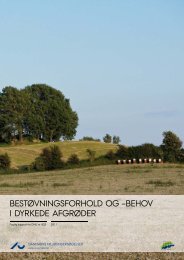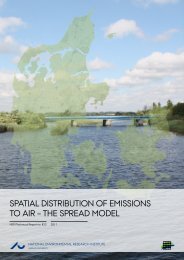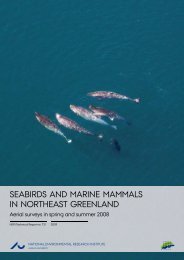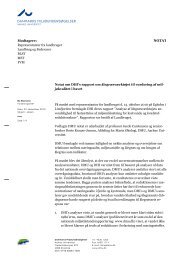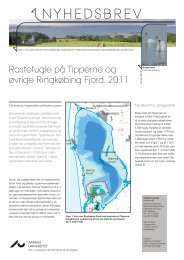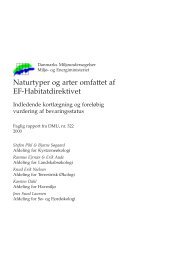Aluminiumsmelter og vandkraft i det centrale Vestgrønland
Aluminiumsmelter og vandkraft i det centrale Vestgrønland
Aluminiumsmelter og vandkraft i det centrale Vestgrønland
You also want an ePaper? Increase the reach of your titles
YUMPU automatically turns print PDFs into web optimized ePapers that Google loves.
Summary<br />
This report was prepared by the National Environmental Research Institute<br />
and the Greenland Institute of Natural Resources for the Greenland<br />
Home Rule Government to be used for preparing a Strategic Environmental<br />
Assessment in connection with the proposed aluminium smelter<br />
and hydroelectric project in central West Greenland. The objective of the<br />
report is to gather and evaluate existing environmental data within the<br />
region that is affected by the project.<br />
The report contains descriptions of plant and animal life and of human<br />
resource use through hunting, fishing, tourism etc. In the descriptions of<br />
plant and animal life we focus on species that are 1) important to fishing<br />
and hunting, 2) rare or threatened, and 3) of international importance. If<br />
data are sufficient, we have prepared maps showing the most important<br />
areas to a certain species or to human resource use within the region. For<br />
each species discussed, we evaluate the importance of the region to the<br />
species and the risk that it may be impacted by the aluminium smelter<br />
and hydroelectric project.<br />
Vegetation is an important <strong>det</strong>erminant of the occurrence of caribou,<br />
muskox and geese. There are large differences in the composition of the<br />
vegetation within the region, e.g. between oceanic, coastal areas and continental<br />
areas towards the Inland Icecap. Elevation is also important, and<br />
some high-lying areas have no vegetation. A number of rare plant species<br />
occur within the region. Establishing reservoir lakes as water supplies<br />
to hydroelectric plants implies that some vegetated areas will be<br />
flooded and the vegetation will be destroyed. This will, however probably<br />
affect only smaller areas. The construction of roads will, to a smaller<br />
extent, affect the vegetation. The potential impact of the project on the<br />
vegetation, including rare species, should be considered as construction<br />
plans are made so that the impact of new roads, transmission lines and<br />
other installations can be mitigated.<br />
The region is important to caribou and muskoxen. The highest concentrations<br />
of caribou are found north of Kangerlussuaq and south of<br />
Maniitsup Sermia. In the northern part of the region at Kangerlussuaq<br />
the animals migrate and are found primarily in early summer in the<br />
inland areas, where they also calve, while in the other part of the year<br />
they are found in more coastal areas. There are also other migration patterns<br />
in this caribou herd, but these are not well documented. In the<br />
southern part of the region the migration pattern is more complicated.<br />
Some animals are found in coastal areas all year round, while others migrate<br />
between winter habitats in coastal areas and calving and summer<br />
habitats in the inland region. Some information is available concerning<br />
the distribution of caribou in the region, but it is patchy in time and<br />
space. There are no systematically collected data on the migration and<br />
location of calving areas, but these are needed. Construction works of<br />
hydroelectric plants or transmission lines will affect the distribution of<br />
caribou in the region, but when construction works and disturbance<br />
have ceased, the animals will be expected to return, if there is no human<br />
activity in the area.<br />
13





